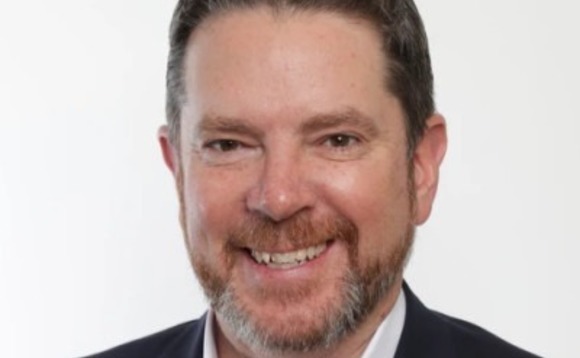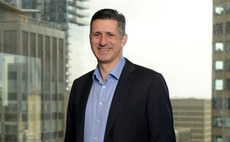
Q&A: Aware Super's Damien Webb

Damien Webb, deputy CIO and head of international at Australia’s Aware Super, on opening offices overseas, internalising asset management, and opportunities at the nexus of PE and infrastructure
Q: Why is Aware Super looking to build an international footprint now?
A: We are a defined contribution fund, not a defined benefit fund, so we must sing for our supper and compete for members who can move between superannuation providers. Our corporate strategy is clear: we must deliver strong returns and lower fees. We also need to invest globally at scale, because our AUM [assets under management] is expected to rise from AUD 150bn (USD 101bn) to AUD 200bn. Part of achieving that performance and fees outcome involves increasing our pathway to internalised assets by at least 50% by 2025-2026 and increasing our private markets footprint. Bring all those things together and we need to have people on the ground in overseas markets to source and manage investments.
Q: What specific targets do you have regarding offices and people?
A: We wanted a targeted strategy at scale, focusing on developed markets. We are going into Europe first and North America second. By the end of this year, we hope to have opened an office in the UK. From London, we can source investments in Europe, and it also serves as a good launching pad for the rest of the world. We will then evaluate adding a North American office two or three years thereafter, depending on the success of the UK office. The goal is to have 20 people in London fairly quickly, so the office feels like a good place to work. We don't want it to be seen as a small branch office, more as an extension of our head office operation. We hope to grow to 30-plus people by 2025. It will be focused in terms of asset classes – just property, infrastructure, and private equity.
Q: What are the main challenges when expanding internationally?
A: Culture is important to us, so preserving that. There is also the issue of sourcing deals in competitive markets – we know it won't be easy. I think you will see other Australian superannuation funds seek to set up offices overseas.
Q: How is the internalisation initiative going?
A: We are progressing well. Things like equities and credit – trading strategies, where there is abundant information – can be relatively well supported from the office here with some travel. In real assets – that's property and infrastructure ¬– we've had great success with direct investments and direct platforms, but with a very heavy home bias. We are a large player here, with an emerging brand and a large team, so transactions naturally come to us. The challenge is taking that success in Australia and seeing whether we can replicate it in overseas markets. As for private equity, we are still very much working with GPs and emphasising co-investment. We want to get closer to those GPs in their marketplaces, so we can do more work with them around co-underwriting and additional strategies.
Q: What is the international share of current allocations to different private markets asset classes?
A: Private equity is about 80% overseas deployed, which you expect given there are larger and deeper markets for funds and co-investments overseas. For real assets, it's the opposite – only 20-30% is overseas. You want to have inflation linkage in real assets. Our members are Australian, and their superannuation funds, which contribute to retirement savings, are indexed to the Australian CPI [consumer price index]. This lines up the cash flows nicely. However, as we grow beyond AUD 150bn in AUM, we will have to moderate that and do more overseas.
Q: There have been some large-cap infrastructure deals in Australia where groups of institutional investors put in most of the capital but bring in a strategic partner to manage the asset. Do those count as direct investments?
A: There is no one set definition of what is direct and what is not direct; there's a bunch of flavours underneath. What we aren't doing much of right now is allocating to pooled funds. We have legacy positions we are happy with, and we will continue to support those funds, especially if they give us additional co-investment. But what we are doing more of is investing in operating businesses or operating platforms that are either existing or we build ourselves from the ground up. Vocus Group [a fibre and network solutions provider acquired by Aware and Macquarie Asset Management for AUD 3.5bn in 2021] is a good example. We put in a significant team alongside Macquarie and have direct governance over the asset. There is a role for fund managers, but increasingly we represent ourselves throughout the value chain.
Q: What about the relationship with private equity managers?
A: We want to have meaningful, workable relationships where we are seen as valuable and agile partners to the GP. Often, we make a fund commitment and get a contractual right to a certain amount of co-investment. To do that, you must be meaningful within the fund. A big part of our strategy has been supporting first-time funds or groups seeking an initial cornerstone commitment. We are also investing more in ourselves, so we are not just a financial investor, but a co-investor or co-underwriter. We want to understand more about what GPs are trying to achieve and how we can support them.
Q: Has it become easier to source co-investments given current market conditions?
A: We have noticed that, with equity and debt markets being more challenged in the last three years, the denominator for asset owners has gone down and their private markets exposure has gone up. Some previously very active allocators have moderated their exposure to a degree, especially those on the DB [defined benefit] side with large private markets portfolios. They are tapping the brakes on allocations, which means fewer follow-on investments and co-investments. We are very much in the market – we are underinvested in our asset allocation to private markets – but we are not being inundated with additional deal flow. Good opportunities are always well supported.
Q: With the emergence of core-plus infrastructure – and changes in how it is defined – is the line between private equity and infrastructure becoming more blurred?
A: I am still relatively comfortable that those spheres are still somewhat different from a return point of view. What's happening more often in infrastructure, when we are putting together consortiums or platforms or business plans, is we're looking at other sources of revenue that could be private equity-like. We like assets that are essential services, have monopolistic tendencies, and have high operating margins over EBITDA. On top of that, there could be other value-added services you can seek to monetise over time. For example, long-term storage solutions could include batteries and other forms of technology, and you end up in a space with infrastructure-style solutions but venture capital-style governance. There will be more situations like that. A lot of the additional capital going into infrastructure will target themes like digitisation and energy transition, which wouldn't be considered core infrastructure. We are already laying new wind farms, building new parts of the energy superstructure, and putting in new broadband and digital towers.
Q: Are you pursuing more core-plus infrastructure opportunities?
A: I don't think it's helpful in property and infrastructure to say that is core, that is core-plus, and that is opportunistic. There are rules of thumb, and you can have quick conversations around a profile, but having those hard definitions doesn't necessarily lead to a better portfolio outcome. We want to look at the drivers of each asset's return. You can have elements of core return and elements of opportunistic cash flow in a single asset – how do you think about that? We like hybrid situations, with a bit of complexity, that might scare other people away. It is dangerous to be overly wedded to historical definitions that are harder to apply in practice.
Q: Would the infrastructure and private equity teams look at assets together?
A: It's an exciting prospect, although there must be clear accountability for who is looking at what. We have been moving into newer areas like motor vehicle registries and land registries. These are interesting businesses with interesting cash flows, but they don't conform to a classical definition of infrastructure. Sometimes there are cash flows that are private equity-like – that need to be procured and grown – and we talk to the private equity team about how we should think about pricing those cash flows and the chance of success.
Q: Have you considered adopting a total portfolio approach instead of an asset allocation model?
A: There are pros and cons to every model. We like our model because there is great value-added alpha coming from bottom-up sector teams. We want to encourage those animal spirits and have broad mandates that allow those teams to innovate in their space. The investment leadership and the strategy team pull it together and set targets and allocations, which they move or tilt as they see fit. There is also clear accountability with this model.
Latest News
Asian GPs slow implementation of ESG policies - survey
Asia-based private equity firms are assigning more dedicated resources to environment, social, and governance (ESG) programmes, but policy changes have slowed in the past 12 months, in part due to concerns raised internally and by LPs, according to a...
Singapore fintech start-up LXA gets $10m seed round
New Enterprise Associates (NEA) has led a USD 10m seed round for Singapore’s LXA, a financial technology start-up launched by a former Asia senior executive at The Blackstone Group.
India's InCred announces $60m round, claims unicorn status
Indian non-bank lender InCred Financial Services said it has received INR 5bn (USD 60m) at a valuation of at least USD 1bn from unnamed investors including “a global private equity fund.”
Insight leads $50m round for Australia's Roller
Insight Partners has led a USD 50m round for Australia’s Roller, a venue management software provider specializing in family fun parks.







